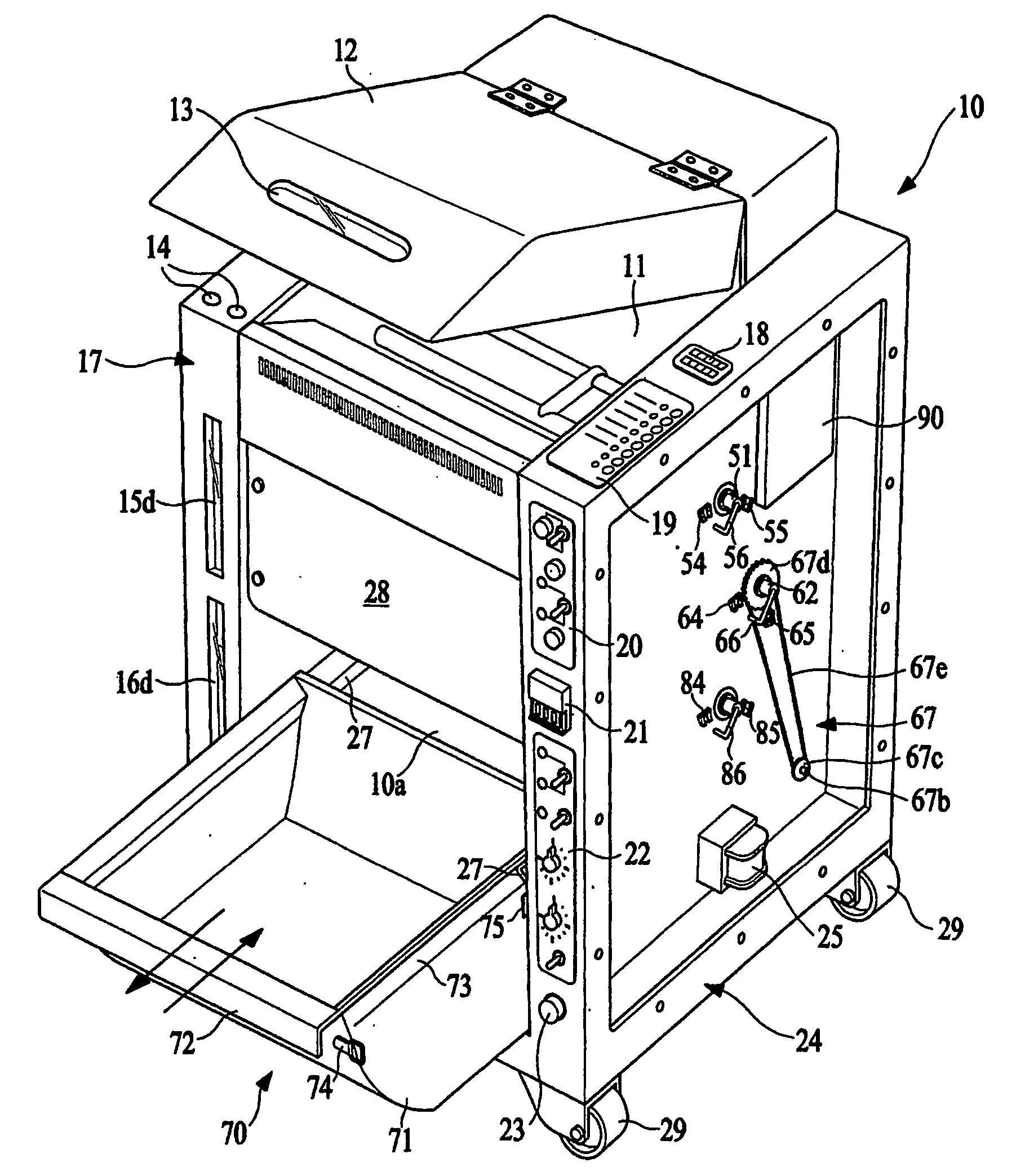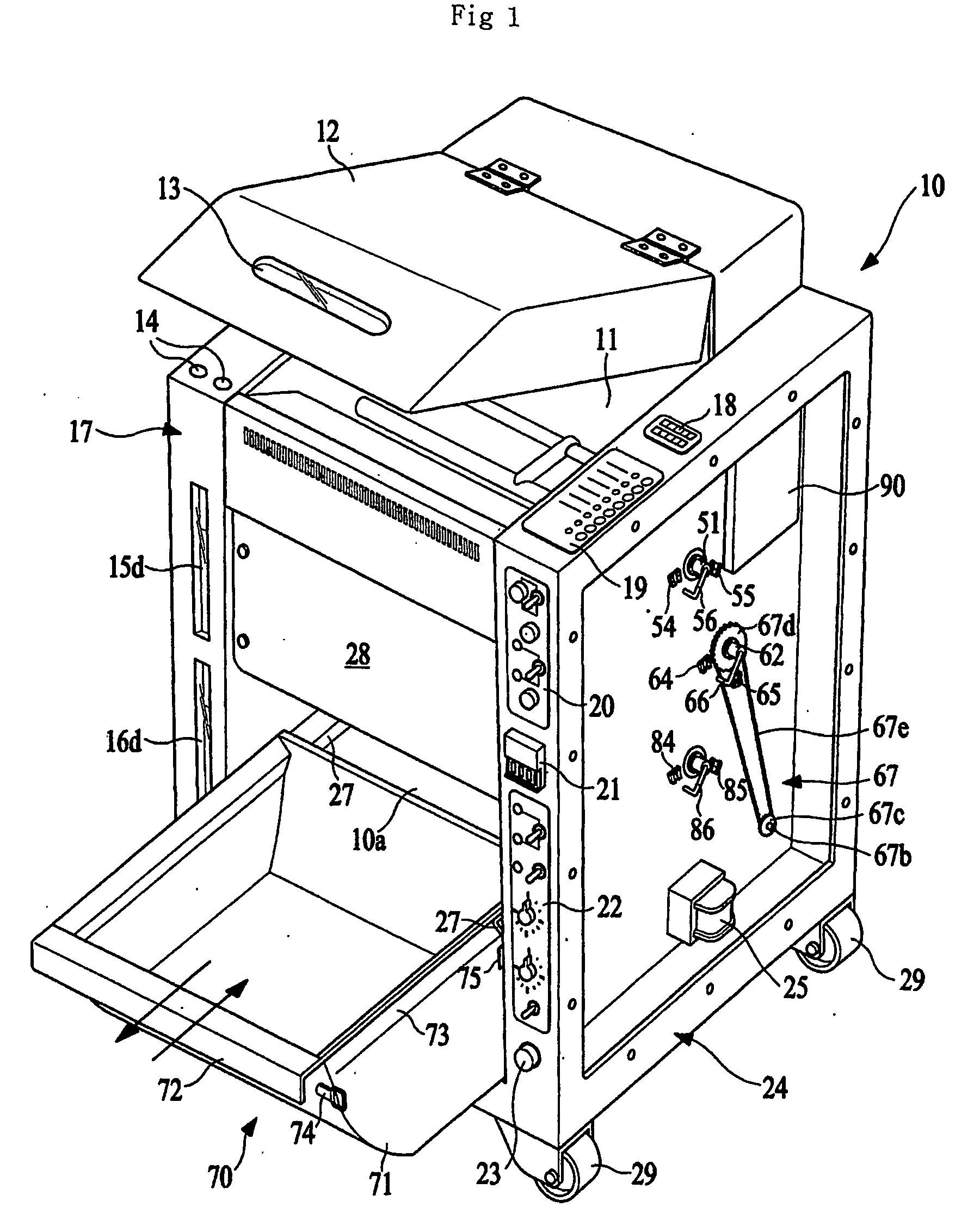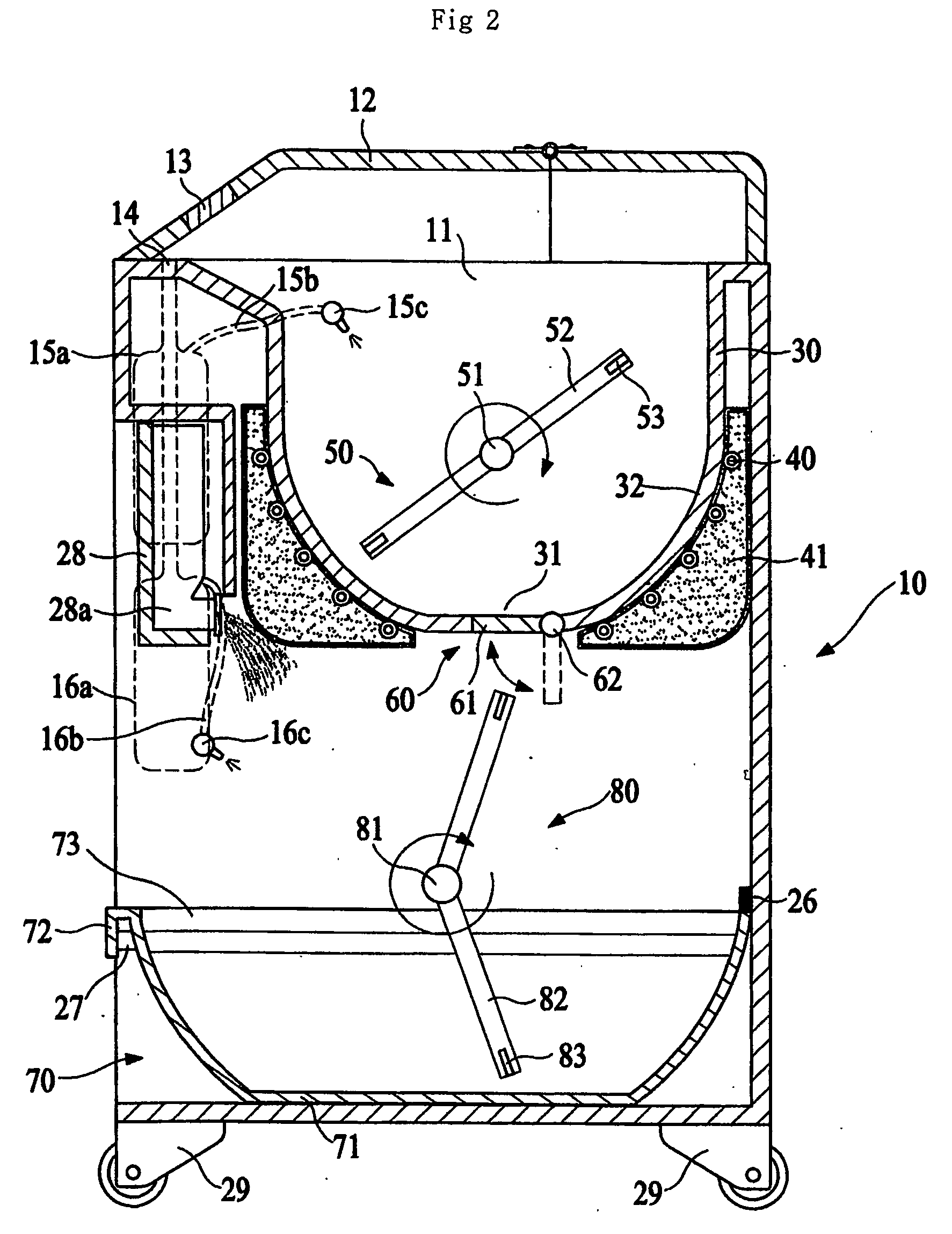Roaster for seasoning marine algae
- Summary
- Abstract
- Description
- Claims
- Application Information
AI Technical Summary
Benefits of technology
Problems solved by technology
Method used
Image
Examples
Embodiment Construction
[0028] A roaster for seasoning marine algae according to a preferred embodiment of the present invention is hereinafter described in more detail with attached drawings.
[0029] The roaster for seasoning marine algae according to the preferred embodiment of the present invention is shown in FIGS. 1 through 6. FIG. 1 shows an approximate perspective view of the roaster with an outward structure, and FIGS. 2 and 3 show, respectively, a right-side and a front-side cross-sectional view simplifying the inner structure. FIGS. 4 and 5 show, respectively, a cross-sectional and a plane view of a cooking agitator (80) applied to the embodiment of the present invention and FIG. 6 shows an approximate sectional view to explain the installed structure of the cooking agitator (80) and extracted structure of a collection cooking container (70).
[0030] As illustrated in FIGS. 1 through 3, the roaster for seasoning marine algae according to the embodiment of the present invention is comprised of a mai...
PUM
 Login to View More
Login to View More Abstract
Description
Claims
Application Information
 Login to View More
Login to View More - R&D
- Intellectual Property
- Life Sciences
- Materials
- Tech Scout
- Unparalleled Data Quality
- Higher Quality Content
- 60% Fewer Hallucinations
Browse by: Latest US Patents, China's latest patents, Technical Efficacy Thesaurus, Application Domain, Technology Topic, Popular Technical Reports.
© 2025 PatSnap. All rights reserved.Legal|Privacy policy|Modern Slavery Act Transparency Statement|Sitemap|About US| Contact US: help@patsnap.com



